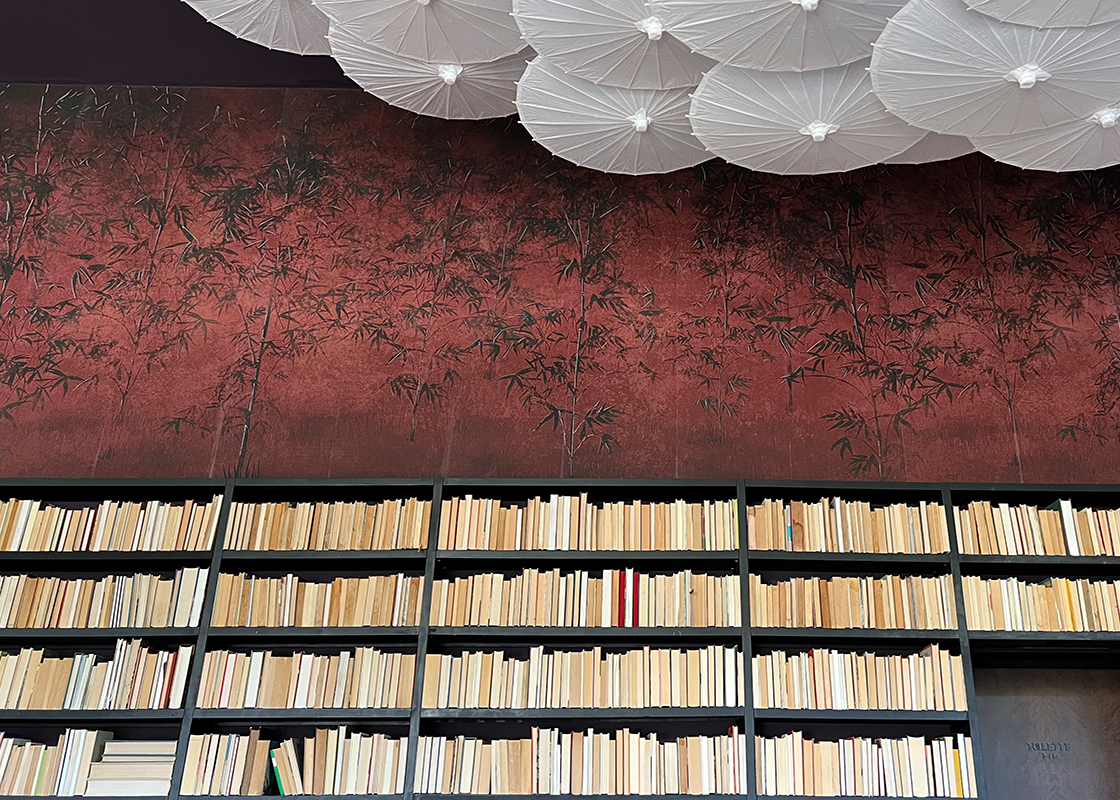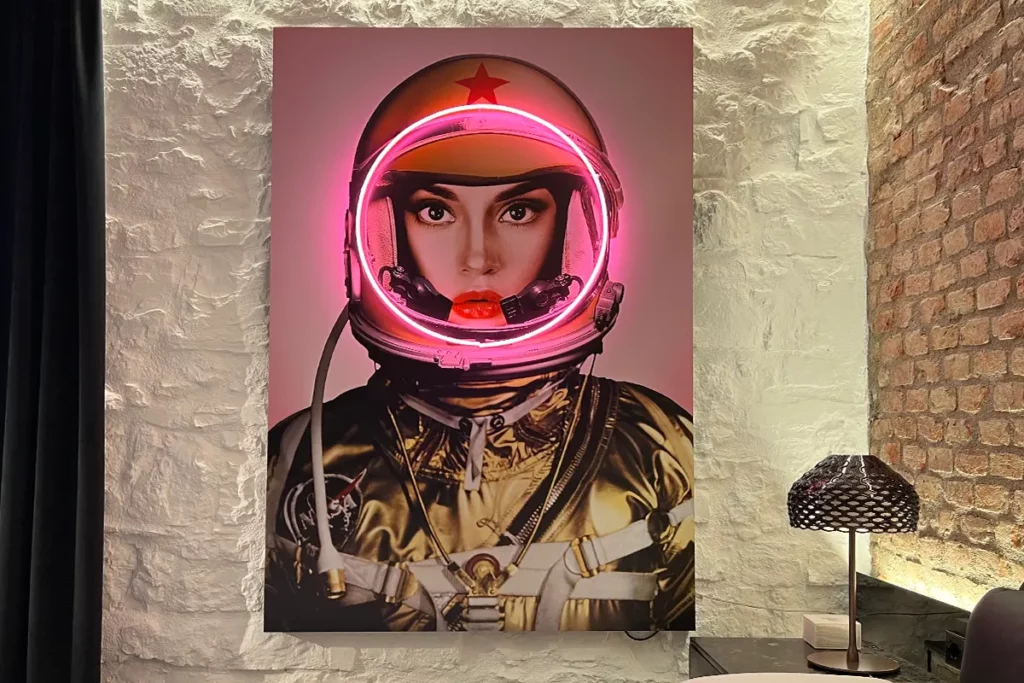In Brescia, Italy’s Capital of Culture 2023, Alberto Marengoni has made a multifunctional space possible that has been a hub of entertainment and hospitality since 1995. Latest openings: a boutique hotel and a Japanese fine dining restaurant – Oriental
Lampoon – Alberto Marengoni founder of Areadocks, Brescia
It is not easy to tell all that Areadocks is-it would be easier to say what it is not. The project has evolved over the years thanks to the foresight of Alberto Marengoni. A past rugby player, collector and lover of travel, art and design, Marengoni entered the restaurant business with the restaurant Seconda Classe in 1995. The name is a nod to the world of trains and railroads: the space originated from the conversion of a former railroad warehouse. The station is nearby and the old tracks are still here. The project led not only to the creation of an original restaurant, a steakhouse with live music and an American-style bar in the center. But also to the redevelopment of the neighborhood, which has turned into a glam destination much sought after by young people in the city and beyond.
Alberto Marengoni is a man full of energy. In 1998 he started producing furniture items and importing vintage, when this was not yet a trend, using the collaboration of a researcher who was very active in the United States, Argentina and Brazil. The boutique hotel was made last: first all the real, local life was created at the base, then the additional service of hospitality, for those who wish to stay.
Areadocks Boutique Hotel: rooms and suites
The interiors were made using natural materials as much as possible, with Marengoni choosing every detail, down to the door knobs, which came from London. The items inside each suite – all different – can be purchased, even restored 19th-century safes that serve as nightstands. The contrasting design of the rooms is characterized by the Heraclitean rhythm and dichotomous spirit, both trendy and bohemian. Objects from brands such as Porro, Timothy Olton, Flos, Artemide, Redaelli, Xam, Andrew Martin, and Gervasoni are combined with vintage elements from thirty years of research and from around the world, creating a room-of-wonder effect.
Guests can enjoy bicycles, electric bikes, electric scooters, umbrellas, personal shopping and interior design services. Four restaurants, six cocktail bars, an ice cream and bakery store, a design store, a concept store, pop-ups, and a multi-purpose venue hosting live music performances, events, restaurants, DJ sets, and consulting companies are developed in a 5000sqm space.
A Lombard city between Milan and Venice
We are in Brescia – which together with Bergamo – is the Capital of Culture 2023. It is enough to spend a few days here to understand why. Brescia’s identity is played out at a crossroads of directions-between Milan and Venice. Brescia is the second largest city in Lombardy, but it is also somewhat Venetian for having been for four centuries, until the 1700s, the domain of the Serenissima. The Palazzo della Loggia was built in the Renaissance as the seat of the Venetian magistracies. Opposite, the astronomical clock has been fully functional since the mid-16th century. Not far away, is the wide and light-filled Piazza della Vittoria, in the rationalist style, designed by Maurizio Piacentini and inaugurated in 1932.
Botticino marble is the sign of Brescia. A marble that brings out the light, of which the Roman monuments in the city are also made – Brescia is also the northern city richest in Roman remains – as the ancient forum, with the Capitolium, the temple, the Domus. The Capitolium and the Museum of Santa Giulia have been UNESCO World Heritage Sites since 2011. City of the Lombard kingdom, Brescia gave it two kings: Rotari (author of the eponymous edict-the first written laws after the fall of the Roman empire) and Desiderio – father of Ermengarda, wife of Charlemagne, who came to die in the monastery of Santa Giulia, now a museum. Sparsa le trecce morbide sull’affannoso petto, wrote Manzoni in Adelchi describing Ermengarda’s death.
The castle and the modern city
Brescia is uneventful, long winding avenues lead upward. You can use the metro – inaugurated in 2013 considered among the most beautiful in Europe – but riding a scooter, it feels like being in Rome. You climb the hill to reach the fortress, at sunset. The bells ring and the sun hides behind the steeples of the beautiful churches, but also behind the tall buildings of this modern city, at the forefront of business and finance. On the top is the castle-that of Brescia is the largest urban castle in Italy. Its grandeur is due to the will of the Serenissima, who in the 1500s wanted to provide the city with an impressive defensive system. Inside is one of the richest weapons museums in Europe, a sign of an industrious city like few, which supplied Venice with war materiel.
The Teatro Grande, built by Luigi Canonica of Milan, is defined as ‘La piccola Scala’. Ugo Foscolo in Brescia fell in love with Countess Marzia Martinengo Cesaresco. In Brescia in 1807 he gave to the press I Sepolcri. The renovated Tosio Martinengo paintings gallery is a treasure trove that preserves Brescia’s prolific pictorial renaissance as well as Pitocchetto’s eighteenth-century paintings of the poor, a sign of the city’s concern for the least of these.
Oriental Restaurant by Areadocks
The recent opening of the Oriental restaurant at Areadocks is another step toward multiplicity of offerings-and cultural multiplicity (it is the fourth restaurant dedicated to international cuisine in the hub). A warm orange hue envelops the customer. The seating capacity is forty. The table chairs have brass finishes and orange upholstery. The walls are filled with books on two sides. At the back, the open kitchen. There, executive chef Xyrex Baraquel, of Filipino descent with experience in Milan, moves nimbly.
Japanese cuisine shares with Italian cuisine a respect for raw materials and purity of processing. Most ingredients are imported directly from Japan and the world’s oceans. Kakuni pork is cooked in Warishita broth at a low temperature for 42 hours and then pan-seared to bring out its tenderness, flavor and character. Wagyu beef comes from a special breed of Japanese cattle, which has a marbled effect and a sweet, fruity taste, earning it the label ‘meat of the gods.’ Kizami Wasabi, fresh horseradish chopped and marinated in soy sauce, brings a strong and somewhat spicy flavor. As for drinks, in addition to a selection of international wines, there is a menu dedicated to various types of sake to pair with beer, as per Japanese ritual.
The last project by Areadocks in Cervia
The Brescian Areadocks group-which includes Maurizio Arrivabene and Alessandro Cestaro-has expatriated to Cervia. Here the Darsena del Sale, historic paleoindustrial architecture founded in 1712, has been redeveloped: 20,000 square meters in one outdoor and one indoor area, divided into three floors and with HouseBoats for catering, entertainment and hospitality.




















